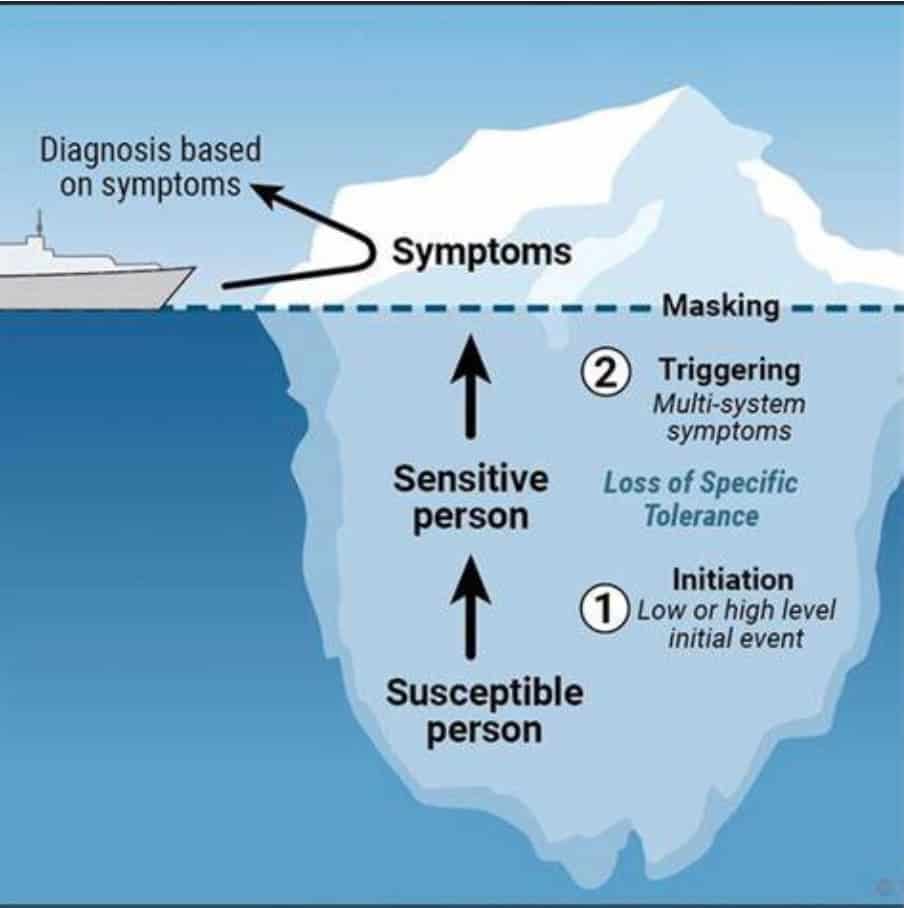Prenatal Exposure to Toxicants Can Affect a Child’s Neurodevelopment
Did you know that a parents’ exposure to toxic substances pre-conception and prenatally may play a role in priming their child’s immune system to be more reactive? This immune priming can have huge implications for a child’s neurodevelopment.
We are exposed to innumerable synthetic toxic substances in everyday life. Things we use every day in our personal care products and in our homes can be wreaking havoc on our immune systems and this effect can be multigenerational. Some of these include:
- Perfumes and synthetic fragrances found in soaps, shampoos, laundry detergent, cleaners
- Fragranced candles, sprays and “plug in” air fresheners
- Dishwashing detergents and household cleaners, including bleach and ammonia
- Preservatives, and stabilizers in cosmetics and personal care products
- Toothpaste, mouthwashes, and even dental floss (which are coated with endocrine disrupting chemicals!)
- Cosmetics, creams, and lotions
- Paints, solvents, nail polish
Dr. Claudia Miller’s TILT (Toxicant-Induced Loss of Tolerance) As a Hidden Mechanism of Disease
Dr. Claudia S. Miller, a physician-researcher at UT Health-San Antonio, reports that parents’ exposure to certain toxic substances before conception may increase the risk of their children developing neurodevelopmental disorders like autism and ADHD. Her 2024 study utilized the Quick Environmental Exposure and Sensitivity Inventory (QEESI), a questionnaire designed to identify individuals with chemical intolerance, to assess the relationship between a parent’s chemical sensitivity and their children’s health outcomes. The study found that parents with high chemical intolerance scores were 5.7 times more likely to report having a child with autism and 2.1 times more likely to report a child with ADHD compared to those with low scores.
TILT—Toxicant-Induced Loss of Tolerance—explains how repeated or intense chemical exposures can cause a person to become hypersensitive to even tiny amounts of everyday chemicals. This condition can disrupt the body’s immune and nervous systems, particularly by over-activating mast cells, which release inflammatory substances in response to perceived threats.
How does a parent’s chemical or toxic substance exposure lead to inflammation or neurodevelopmental issues in a child?
When a parent experiences TILT before or during the pregnancy with the child, their body may exist in a state of chronic inflammation. This altered immune environment, along with possible disruptions in hormone balance, microbiome balance, nutrient absorption, and other factors can affect the developing fetus. These inflammatory and chemical exposures during critical windows of brain development increase the risk of conditions like autism and ADHD in the child.
Toxicant-Induced Loss of Tolerance
Toxicant Induced Loss of Tolerance (TILT) is a two-stage process:
- Initiation: A significant exposure to a chemical or a series of low-level exposures disrupts the body’s ability to tolerate substances previously deemed harmless.
- Triggering: After this loss of tolerance, even minimal exposures to various substances, including foods, drugs, or environmental chemicals, can provoke a range of inflammatory symptoms across multiple organ systems.

Published with the permission of Dr. Claudia Miller.
Once TILT develops, mast cells, which are the “first responders” in the immune system are easily triggered by even small amounts of chemicals, foods or drugs. This predisposition for inflammation is passed along to offspring in utero and to subsequent generations.
The TILT mechanism for disease suggests that reducing parents’ toxic exposures before conception and during pregnancy may lower this risk by creating a healthier developmental environment for the baby.
Quick Environmental Exposure and Sensitivity Inventory (QEESI)
To identify and assess chemical intolerance, Dr. Miller developed the Quick Environmental Exposure and Sensitivity Inventory (QEESI). This self-administered questionnaire evaluates the severity of symptoms, chemical intolerances, other intolerances (like foods and drugs), and life impact. The QEESI has been validated and is widely used in both clinical and research settings to differentiate individuals with chemical intolerance from the general population. Dr. Miller has discovered that parents of children with neurodevelopmental disorders such as ASD and ADHD generally score higher on the QEESI, indicating they have experienced prior immune activation that may have had an influence on their children’s neurodevelopment.
You can take the QEESI self assessement via a short questionnaire: https://tiltresearch.org/self-assessment/
About Beth Lambert
Beth Lambert is a former healthcare consultant and teacher. As a consultant, she worked with pharmaceutical, medical device, diagnostic and other health care companies to evaluate industry trends.
She is the author of A Compromised Generation: The Epidemic of Chronic Illness in America’s Children (Sentient Publications, 2010). She is also a co-author of Documenting Hope's Brain Under Attack: A Resource for Parents and Caregivers of Children with PANS, PANDAS, and Autoimmune Encephalitis. She is a co-author of Reversal of Autism Symptoms among Dizygotic Twins through a Personalized Lifestyle and Environmental Modification Approach: A Case Report and Review of the Literature, J. Pers. Med. 2024, 14(6), 641.

In 2009, Beth founded Documenting Hope and currently serves as Executive Director. Beth attended Oxford University, graduated from Williams College and holds a Masters Degree in American Studies from Fairfield University.
Still Looking for Answers?
Visit the Documenting Hope Practitioner Directory to find a practitioner near you.
Join us inside our online membership community for parents, Healing Together, where you’ll find even more healing resources, expert guidance, and a community to support you every step of your child’s healing journey.
Sources & References
Heilbrun, L.P., et al. Maternal Chemical and Drug Intolerances: Potential Risk Factors for Autism and Attention Deficit Hyperactivity Disorder (ADHD). J Am Board Fam Med. 2015 Jul-Aug;28(4):461-70.
Miller, C.S., et al. Mast cell activation may explain many cases of chemical intolerance. Environmental Sciences Europe (2021) 33:129.
Miller, C.S. Toxicant-induced loss of tolerance. Addiction. 2001 Jan;96(1):115-37.
Palmer, R.F., et al. Assessing Chemical Intolerance in Parents Predicts the Risk of Autism and ADHD in Their Children. J Xenobiot. 2024 Mar 5;14(1):350-367.
Resources
Articles
Study: Parents Can Help Prevent Autism and ADHD in Children By Avoiding Toxic Exposures. UT Health-San Antonio, Hoffman Program for Chemical Intolerance. 27 Mar 2024.







